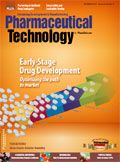Knowledge is Power
Global tactics that incorporate online technologies and social media are reshaping disease response.
On Oct. 3, 2012, NPR's Richard Knox reported on a growing trend in identifying infectious diseases and new viruses. The World Health Organization (WHO) issued an alert in September about a new SARS-related coronavirus that affected a Qatari man who had recently visited Saudi Arabia. Another Saudi Arabian man died in July from the same virus. In the US, the Centers for Disease Control and Prevention (CDC) identified a new tick-borne virus, being called the Heartland virus, in Missouri in late August. And recently in the Democratic Republic of Congo, researchers identified a new Rhabdovirus associated with hemorrhagic fever, based on an outbreak that started in 2009.

Angie Drakulich
"The most striking thing about all three new viruses is that they were found on the basis of just two or three human cases," said Knox in his NPR report. "That's a long way from where the world was 10 years ago, when another new virus popped up in Asia [SARS] and quickly went global."
In fact, the 2003 SARS virus affected 8000 people in 26 countries before it was brought under control, according to the WHO website. One key difference with the original SARS is that Chinese authorities did not immediately notify the public of the outbreak, which started in 2002 in the country's Guangdong Province, leading to something of a wild goose chase for global health workers. Another difference is that the way the world communicated was very different, even just 10 years ago.
"Today, we would have seen that information bubbling up in many different places," John Brownstein, PhD, of Boston's Children's Hospital (BCH) told Knox in the NPR report. Brownstein helped to create a real-time website called Healthmap.org and a related mobile app called Outbreaks Near Me. Both technologies collect and post information on global disease outbreaks 24 hours a day, 365 days a year, with the goal of facilitating early detection of global public health threats.
Digital disease-detection programs like Healthmap are on the rise and are having a big effect on how fast virus news can spread. Google has a population-tracking website for influenza epidemics that monitors trends worldwide. A similar tracker, Influenzanet, has been monitoring flu-like viruses across Europe since 2003. Canada's Global Public Health Intelligence Network is an Internet-based early-warning system that gathers public health reports in real time from global media sources in six languages. And the US CDC's BioSense 2.0 program, which launched in 2011, tracks evolving health problems across the country to get word out to healthcare authorities and patients quickly. Taking this a step further, President Obama enacted the first US National Strategy for Biosurveillance over the summer. The strategy, based on the government's counterterrorism efforts, enables the Department of Defense to track and analyze disease-related activity with an eye towards early warning and detection.
Another catalyst for the move towards rapid global disease identification and response has to do with new global regulations. WHO enacted new binding International Health Regulations in 2005 (they hadn't been updated since 1969 and, until 2005, only included cholera, yellow fever, and dengue) that require countries to report certain disease outbreaks and public-health events.
And let's not forget the power of social-media platforms. At the BCH's 2012 international conference on digital-disease detection, an entire session was devoted to Twitter, in which John Dredze of Johns Hopkins University, among others, spoke about using the social media to mine public health information. Using algorithms, Dredze's team identified 1.6 million health-related tweets between Apr. 2009 and Oct. 2012, and categorized them into 15 fields, such as common cold, cancer, and depression. Courtney Corley and his team at the Pacific Northwest National Laboratory presented research into how social media conversations can be used to identify emerging concerns about vaccine safety.
In general, social media and the Internet have opened a world in which scientists, healthcare professionals, academics, regulators, and patients can work together to bring light to new or growing diseases before they spread in mass numbers, thereby strengthening global public protection in ways we never thought possible. As new viruses and infectious diseases emerge—and they will—it's good to know we have such information technologies at our disposal. As they say, knowledge is power.
Angie Drakulich is editorial director of Pharmaceutical Technology. Send your thoughts and story ideas to adrakulich@advanstar.com.

Drug Solutions Podcast: A Closer Look at mRNA in Oncology and Vaccines
April 30th 2024In this episode fo the Drug Solutions Podcast, etherna’s vice-president of Technology and Innovation, Stefaan De Koker, discusses the merits and challenges of using mRNA as the foundation for therapeutics in oncology as well as for vaccines.
Drug Solutions Podcast: Gliding Through the Ins and Outs of the Pharma Supply Chain
November 14th 2023In this episode of the Drug Solutions podcast, Jill Murphy, former editor, speaks with Bourji Mourad, partnership director at ThermoSafe, about the supply chain in the pharmaceutical industry, specifically related to packaging, pharma air freight, and the pressure on suppliers with post-COVID-19 changes on delivery.